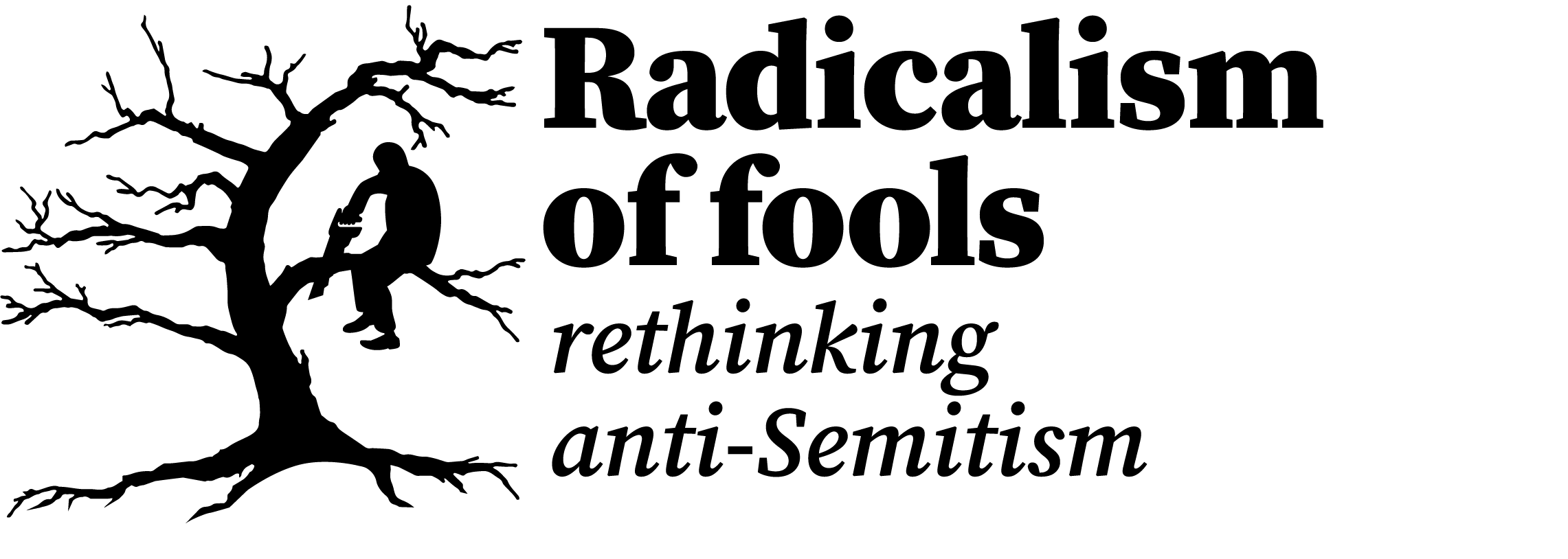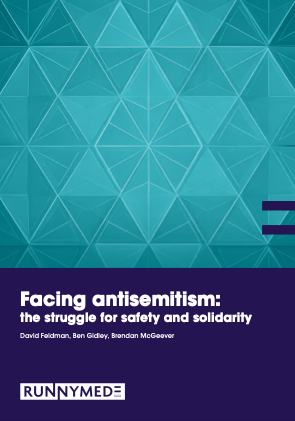‘What about Islamophobia?’ Anyone who campaigns against anti-Semitism is likely to be confronted with this question sooner rather than later.
The question is annoying for several reasons. For a start it is a way of steering the discussion away from examining anti-Semitism itself. It is of course reasonable to have separate discussions on anti-Muslim bigotry but it is not helpful to counterpose it to anti-Semitism. The fact that those who ask this question are often profoundly smug adds to the irritation. They typically see themselves as speaking for the oppressed in challenging the supposed supremacy of those who focus on anti-Semitism.
One possible response to the question is to go on the offensive against the concept of Islamophobia. I have argued previously that it unhelpfully muddles together hatred of Muslims, mockery of Islam as a faith and political opposition to Islamism.
But this article will do something different. It will examine the mindset which considers “what about Islamophobia?” such a compelling response to discussions of anti-Semitism. Proponents of identity politics who ask this question typically flatter themselves as having a superior understanding of racism as a structural force.
A new report on Facing antisemitism from the Runnymede Trust, a British think tank dedicated to challenging structural racism, is a good place to start. The three authors, all from the Birkbeck Institute for the Study of Antisemitism at the University of London, broadly uphold identity politics. Their views are close to those of Rachel Shabi, a British anti-Zionist Jewish author and activist, whose new book I reviewed recently for spiked. The new report is also in some senses a follow up to Runnymede’s 1994 publication on anti-Semitism as A Very Light Sleeper. That report emphasised the need to integrate action against anti-Semitism with action against other forms of racism.
The new report divides approaches into anti-Semitism into two broad types. The first, favoured by the report, sees anti-Semitism as part of a family of racisms including Islamophobia. The second is cast as seeing anti-Semitism as an individual prejudice without parallel. This latter approach – which is a caricature of what I and others have argued – is clearly the target of the report. The authors are hostile to any take on anti-Semitism which emphasises its unique features - the subject of numerous articles on this site.
As part of seeing anti-Semitism mainly in structural terms the report develops the concept of a ‘reservoir’ of anti-Semitism. It defines this as “a repertoire of stereotypes and stories embedded in our common culture that is drawn on in moments of crisis and tension”. This is counterposed to the mainstream’s claimed focus on individual prejudice.
Although the term ‘reservoir’ may not be widely used the conception is not the intellectual breakthrough the authors seem to assume. Those who emphasise anti-Semitism’s uniqueness are generally well aware of the history of anti-Jewish tropes.
The report also presents the supposed distinction between structural and individualist approaches as most clearly manifesting itself in relation to Israel. Those who take a structural approach are cast as being aware of Israel’s own racism. In contrast, those with a supposedly blinkered approach to anti-Semitism are presented as shielding Israel from criticism as they are blind to other forms of racism.
Much of the report is taken up by a historical and general take on anti-Semitism. Aspects of the account are questionable but they need not detain us here. The most interesting section of the report is on what it calls the politics of anti-antisemitism. In other words, the different approaches pursued by those who want to oppose anti-Semitism.
The report is critical of those sections of the Jewish community which want to build what it calls “vertical alliances” to fight anti-Semitism. In particular it criticises Jewish organisations such as the Community Security Trust (CST) which accept government funding to help provide security for Jewish communal buildings and events.
In contrast, it praises alliances between left wing Jews who are willing to form horizontal alliances with other forces. It references the battle of Cable Street in 1936 when Jews, trade unionists and Communists stopped fascists from marching through a Jewish area. This account neglects to mention that the London leadership of the Communist party – then influential – tried to dissuade its members from participating. Instead it wanted them to attend a rally in Trafalgar Square against the Spanish Civil War (see this account by Joe Jacobs, a local activist).
In relation to the present day the report praises broadly anti-Zionist organisations such as Na’amod and the Diaspora Alliance. These are deemed to be seeking to “build opposition to antisemitism through multi-racial historical alliances”. It fails to mention that such organisations often participate in protests which not only criticise Israel – which is their right - but call for its destruction. There is also a substantial component of open anti-Semitism on such marches for anyone who cares to look (see, for example, the multiple video interviews with anti-Israel marchers by the Campaign Against Antisemitism).
The most virulent criticism in the report is reserved for the state’s involvement in combating anti-Semitism. This is in turn seen to be in alliance with mainstream Jewish organisations. Three sets of criticisms are employed against the official approach. First, it tends to focus too much on individual prejudice and bad ideas. Second, this in turn means it fails to understand structural racism including Islamophobia. Finally, the emphasis on combating anti-Semitism is held to create the perception of a hierarchy of racism. The report is particularly critical of “state-sponsored Holocaust remembrance”. In its view this has “functioned to replace any serious reckoning with Britain’s role in slavery and the slave trade, with the realities of British colonialism.”
The report concludes by arguing for what it calls as “360-degree anti-racism”. This is held to mean “a new approach to combating antisemitism that is based on building alliances between Jewish people and other racialised minorities”. This conception builds on a key theme in the Runnymede’s 1994 report.
There are many flaws in the new report. The most fundamental is that it is built on a straw man argument. It is perfectly possible to emphasise the unique features of anti-Semitism while acknowledging that racial thinking is a broader phenomenon. It is not helpful to pose the debate as between those narrowly preoccupied with individual prejudice and those who recognise a broader structural context. Indeed, although I believe anti-Semitism is unique, I have argued strongly against the idea that it can be reduced to an individual prejudice.
If anything the key problem with discussions of anti-Semitism is that they all too often fail to grapple with its unique features. It is just cast as another one of several different nasty forms of hate.
Starting from its premise it is not surprising that the report draws some dubious conclusions. For example, it fails to recognise the left’s historical failure to challenge anti-Semitism. Even before the second world war it tended to see opposing anti-Semitism as relatively unimportant. The left generally failed to recognise that centrality of anti-Semitism to mainstream elite thinking. And that is leaving aside the leftists who themselves succumbed to the 'socialism of fools' – seeing Jews as the personifying the evils of speculative capitalism.
It is also notable that the report implicitly endorses the notion of Jewish privilege even though it does not use the term. Essentially it criticises mainstream Jewish organisations for focusing on “vertical alliances” with the state rather than building alliances with other ‘racialised minorities’. This alliance between Jews and the state is seen as creating a hierarchy of racisms with Jews at the top.
What this misses is that mainstream Jewish organisations tend to build links with the state – often for their own physical protection – precisely because they are all too often isolated. For good reason they do not trust the left or other radical movements to protect them from attack. This is not a mark of privilege but, on the contrary, a sign of isolation.
A final notable feature of the report is what it does not mention. It discusses Jews, ‘racialised minorities’ and the state but there is no reference to the white majority of the population. Presumably the report sees them as incapable of being motivated to defend Jews or other minorities.
The 'what about Islamophobia?' question in relation to anti-Semitism is essentially a form of virtue signalling. It points to the supposed narrowness of most opponents of anti-Semitism and the presumed goodness of those who claim to speak for the oppressed.
The best comeback will vary from place to place but in any event it is essential to draw out the unique features of anti-Semitism. It is not possible to challenge the scourge effectively without grappling with what differentiates it from other forms of racial thinking.
*Bibliographic note: Key authors cited as broader intellectual influences in this report include Hannah Arendt, Aimé Césaire, WEB Du Bois (who wrote dispatches from the Warsaw ghetto) and Edward Said. In my view the views of Arendt in particular are grossly misunderstood by the authors.
The aftermath of the 7 October Hamas pogrom in Israel has made the rethinking of anti-Semitism a more urgent task than ever. Both the extent and character of anti-Semitism is changing. Tragically the open expression of anti-Semitic views is once again becoming respectable. It has also become clearer than ever that anti-Semitism is no longer largely confined to the far right. Woke anti-Semitism and Islamism have also become significant forces.
Under these circumstances I am keen not only to maintain this site but to extend its impact. That means raising funds.
The Radicalism of fools has three subscription levels: Free, Premium and Patron.
Free subscribers will receive all the articles on the site and links to pieces I have written for other publications. Anyone can sign up for free.
Premium subscribers will receive all the benefits available to free subscribers plus my Quarterly Report on Anti-Semitism. They will also receive a signed copy of my Letter on Liberty on Rethinking Anti-Semitism and access to an invitee-only Radicalism
of fools Facebook group. These are available for a 17% discounted annual subscription of £100 or a monthly fee of £10 (or the equivalents in other currencies).
Patron subscribers will receive the benefits of Premium subscribers plus a one-to-one meeting with Daniel. This can either be face-to-face if in London or online. This is available for a 17% discounted annual subscription of £250 or a monthly fee of £25 (or the equivalents in other currencies).
You can sign up to either of the paid levels with any credit or debit card. Just click on the “subscribe now” button below to see the available options for subscribing.
You can of course unsubscribe at any time from any of these subscriptions by clicking “unsubscribe” at the foot of each email.
If you have any comments or questions please contact me at daniel@radicalismoffools.com.

